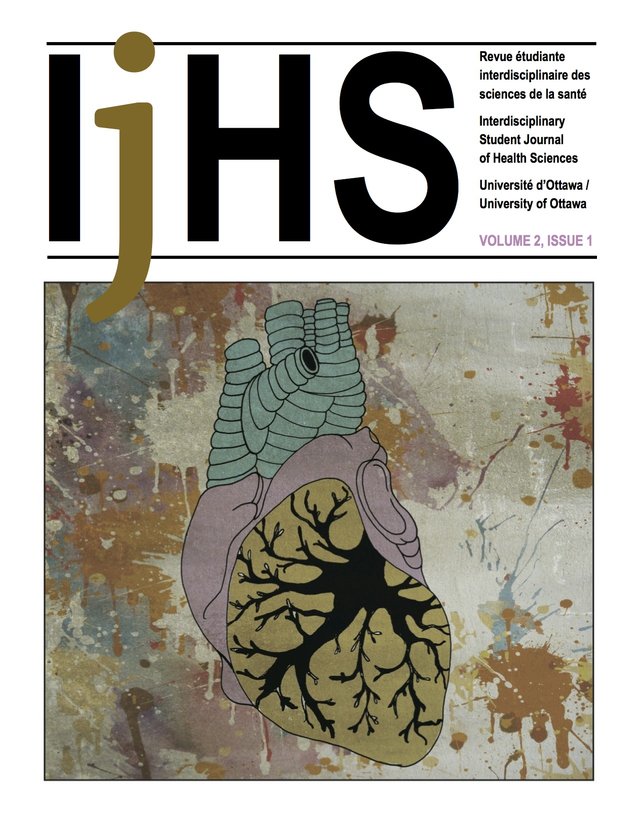SmartHand: A Sense of Assistive Devices
DOI :
https://doi.org/10.18192/riss-ijhs.v2i1.1527Mots-clés :
Technologie d’appareils fonctionnels, invalidité, amputés, prothèses myoélectriquesRésumé
Les amputés doivent souvent affronter une stigmatisation sociale parce qu’il est évident aux yeux de tous qu’ils ont perdu un membre ou qu’ils utilisent une prothèse. Cependant, l’utilisation de prothèses a fait beaucoup de progrès au cours des dernières années, surtout en ce qui concerne les prothèses sensorielles. Plusieurs réseaux d’information ont récemment fait des reportages à propos d’un appareil de ce type, un nouveau prototype appelé la SmartHand. Dans la discussion, l’auteure analyse la SmartHand et la compare avec les plateformes existantes, et notamment avec les prothèses myo-électriques et avec la ré innervation musculaire ciblée. L’auteure conclut que la SmartHand offrait un niveau plus élevé de compétences à ses utilisateurs et améliorait leur qualité de vie. Toutefois ses conclusions soulignent aussi les obstacles scientifiques qui se posent, surtout au niveau du rejet tissulaire. L’analyse coût-avantage d’un tel appareil risque aussi de produire des données contradictoires, ce qui pourra nuire à sa mise en œuvre à une plus large échelle. Malgré ces problèmes, la SmartHand est un des appareils fonctionnels disponibles aujourd’hui les plus avancés sur le plan scientifique, et son utilité pour les amputés est indéniable.
Références
Canadian Agency for Drugs and Technologies in Health. (2007). Medical device regulation in Canada: A primer. Retrieved from http://www.cadth.ca/products/ environmental-scanning/health-technology-update/health -technology-update-issue5/medical-device
Chung, K. C., Oda, T., Saddawi-Konefka, D., & Shauver, M. J. (2010). An economic analysis of hand transplantation in the United States. Plastic and Reconstructive Surgery, 125 (2), 589-598. doi: 10.1097/PRS.0b013e3181c82eb6
Hunter, J. P., Katz, J., & Davis, K. D. (2005). Dissociation of phantom limb phenomena from stump tactile spatial acuity and sensory thresholds. Brain, 128(2), 308-320. doi: 10.1093/brain/awh350
Marasco, P. D., Schultz, A. E., & Kuiken, T. A. (2009). Sensory capacity of reinnervated skin after redirection of amputated upper limb nerves to the chest. Brain, 132(6), 1441 -1448. doi: 10.1093/brain/awp082
Miller, L. A., Stubblefield, K. A., Lipschutz, R. D., & Kuiken, T. A. (2008). Improved myoelectric prosthesis control using targeted reinnervation surgery: A case series. IEEE Transactions on Neural Systems and Rehabilitation Engineering, 16(1), 46-50. doi: 10.1109/TNSRE.2007.911817
Parker, P., Englehart, K., & Hudgins, B. (2006). Myoelectric signal processing for control of powered limb prostheses. Journal of Electromyography and Kinesiology, 16 (6), 541-548. Retrieved from http://www.jelectromyographykinesiology.com/
Peramo, A., & Marcelo, C. L. (2010). Bioengineering the skin-implant interface: The use of regenerative therapies in implanted devices. Annals of Biomedical Engineering, 38 (6), 2013-2031. doi: 10.1007/s10439-010-9937-1
Pylatiuk, C., Schulz, S., & Doderlein, L. (2007) Results of an internet survey of myoelectric prosthetic hand users. Prosthetics and Orthotics International, 31(4), 362- 370. doi: 10.1080/03093640601061265
Scherer, M., Jutai, J., Fuhrer, M., Demers, L., & Deruyter F. (2007). A framework for modeling the selection of assistive technology devices (ATDs). Disability and Rehabilitation: Assistive Technology, 2(1), 1-8. doi: 10.1080/17483100600845414
Tutton, M. (2009, November 6). The artificial hand that can ‘feel’. CNN. Retrieved from http://www.cnn.com/
Weir, R. F., Troyk, P. R., DeMichele, G., & Kerns, D. (2005). Technical details of the implantable myoelectric sensor (IMES) system for multifunction prosthesis control. Conference proceedings: Annual International Conference of the IEEE Engineering in Medicine and Biology Society, 7, 7337-7340. doi: 10.1109/IEMBS.2005.1616206
Ziegler-Graham, K., MacKenzie, E. J., Ephraim, P. L., Travison, T. G., & Brookmeyer, R. (2008). Estimating the prevalence of limb loss in the United States: 2005 to 2050. Archives of Physical Medicine and Rehabilitation, 89(3), 422-429. doi: 10.1016/j.apmr.2007.11.005
Téléchargements
Publié-e
Numéro
Rubrique
Licence
- Tous les auteurs dont l’article est publié dans la RISS en conserveront les droits.
- Les auteurs accordent à la RISS le droit d’être la première à publier les articles qui lui sont soumis.
- Tous les articles publiés dans la RISS sont autorisés en vertu d’une licence Creative Commons Attribution à être circulé si les auteurs et la revue de la publication originale sont reconnus.
- La RISS est publiée en ligne et imprimée. La RISS n’est pas responsable de l’utilisation non autorisée du contenu publié sous forme électronique ou imprimée.
- La RISS retient les droits de distribution de tout le contenu.
- Les auteurs, et non la RISS, sont responsables d’avoir obtenu les permissions nécessaires concernant les travaux cités.


